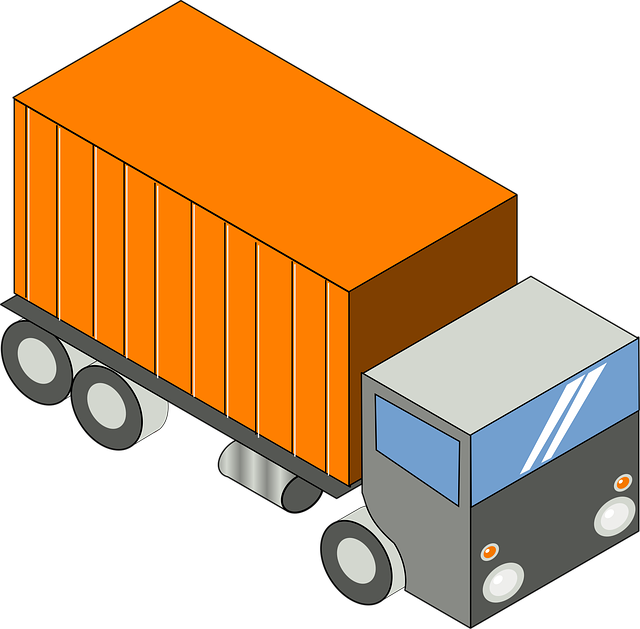Looking to register your car in California? Navigating the process can seem daunting, but with the right preparation, it’s straightforward. This guide breaks down every step, from understanding California’s car registration requirements and gathering essential documents for VIN verification to completing the registration online or at a DMV office. We’ll also walk you through paying fees and obtaining your license plate. Master the art of vin verification and get your vehicle registered in California efficiently.
- Understand California Car Registration Requirements
- Gather Necessary Documents for VIN Verification
- Perform Vehicle Identification Number (VIN) Check
- Complete Online Registration or Visit DMV
- Pay Registration Fees and Receive License Plate
Understand California Car Registration Requirements

Before registering your car in California, it’s crucial to understand the state’s specific requirements. One key step is ensuring accurate and current vehicle identification number (VIN) verification. This process confirms the vehicle’s make, model, year, and other critical details, which are essential for issuing a valid registration. In California, you’ll need to provide a completed Form MV-5, often requiring a mobile VIN verifier or inspection to obtain the necessary information from your car’s unique 17-character VIN code.
Additionally, you must meet certain criteria like having a valid driver’s license and proof of insurance. The California Department of Motor Vehicles (DMV) also mandates that vehicles undergo safety inspections to ensure they comply with state standards. These requirements collectively aim to promote road safety and maintain accurate vehicle records, making the registration process seamless for both new and existing car owners.
Gather Necessary Documents for VIN Verification

Before you can register your car in California, you’ll need to gather several crucial documents for VIN (Vehicle Identification Number) verification. This process is a key step in ensuring the vehicle’s history and authenticity are accurately established. The state requires proof of ownership, so have your title or registration certificate ready. Additionally, you must provide a current insurance card and a valid driver’s license.
For a seamless vin inspection process, ensure all documents are up-to-date and accurate. If you’re opting for a mobile vin verification service, many companies will require digital copies of these documents, so have them readily available in electronic format. This efficient method allows you to complete the registration from the comfort of your home or even while you’re on the go.
Perform Vehicle Identification Number (VIN) Check

Before registering your car in California, it’s crucial to perform a Vehicle Identification Number (VIN) check. This step is essential for verifying the vehicle’s history and ensuring it hasn’t been reported as stolen or had previous damage. A VIN inspection involves using specialized tools to cross-reference the unique 17-character VIN number against databases that include information about accidents, odometer rollback, and outstanding loans or leases.
In California, you can complete this process through a mobile vin verification service, which allows for convenient and efficient checking from the comfort of your home or even while you’re on the go. These mobile vin verifiers offer accurate and real-time results, making it an ideal solution for anyone looking to streamline their car registration process.
Complete Online Registration or Visit DMV

Registering a car in California involves either completing the process entirely online or visiting a DMV office. Online registration is a convenient and fast way to get started. You’ll need your vehicle’s Vehicle Identification Number (VIN) for verification, which can be done quickly with a mobile VIN verifier or inspection service to ensure the vehicle’s history is clean.
Once you’ve confirmed your VIN, you can move on to other necessary steps like providing proof of insurance and paying the registration fee. Online platforms make this process seamless, allowing you to upload documents digitally. Alternatively, visiting a DMV office entails queuing up for service, but it offers an opportunity to get personalized assistance if needed.
Pay Registration Fees and Receive License Plate

After completing the registration process and providing all necessary documentation, it’s time to pay the registration fees for your vehicle. These fees vary based on the type and weight of your car, so be sure to check the California Department of Motor Vehicles (DMV) website or consult a DMV representative for accurate amounts. Payment can typically be made online, by phone, or in person at a local DMV office. Once your payment is processed, you’ll receive your license plates, which are crucial for identifying your vehicle on California roads.
To streamline this process, many Californians opt for a mobile vin verifier or conduct a mobile vin verification to ensure their vehicle’s history and eligibility for registration is up-to-date. This digital inspection can be done quickly and easily by downloading an app from trusted sources or contacting a certified mobile vin inspection service. Using these modern tools, you can conveniently verify your car’s VIN (Vehicle Identification Number) and avoid potential issues during the registration process.
Registering a car in California involves understanding state requirements, gathering essential documents, passing a VIN verification check, and completing the registration process either online or at the DMV. By ensuring accurate information and proper documentation, you’ll successfully navigate the process, leading to a smooth and legal ownership experience. Remember, a thorough VIN verification is key to meeting California’s car registration standards.
